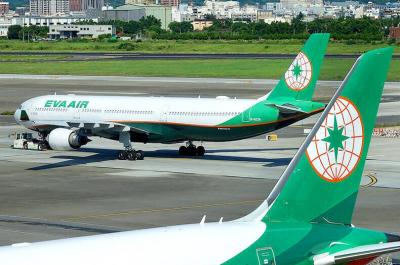The Centers for Disease Control (CDC) have raised the level of its epidemic alert for Japan based on that country’s apparent confirmation of an indigenous case of swine flu, a CDC official said yesterday.
Officials will add Japan to the list of countries they inquire about if passengers arrive in Taiwan exhibiting fever or other flu-like symptoms, CDC spokesman Shih Wen-yi (施文儀) said.
“We will pay more attention to passengers who travel to Taiwan from Japan from now on,” Shih said, adding that those who develop a fever after arriving in Taiwan should see a doctor and disclose their recent travel history.
Wire reports said health authorities in Kobe, Japan, disclosed yesterday that a senior high school student in the city was confirmed as testing positive for the A(H1N1) flu virus. Confirmation for two other students showing symptoms of the disease was pending. None of the students have been abroad recently, the reports stated.
“It is unclear where the patients contracted the virus, and therefore the possibility of community outbreaks has been raised,” Shih said, adding the CDC was expecting to receive a report from Japan later in the day detailing the A(H1N1) situation.
The neighboring country is now on “yellow” epidemic alert status, suggesting it may have moved from having only imported cases to an indigenous outbreak of swine flu, he said.
In light of this development, Taiwan has also raised its epidemic alert for Japan from the lowest in the three-phase “yellow” scale to the second highest, Shih said.

The first global hotel Keys Selection by the Michelin Guide includes four hotels in Taiwan, Michelin announced yesterday. All four received the “Michelin One Key,” indicating guests are to experience a “very special stay” at any of the locations as the establishments are “a true gem with personality. Service always goes the extra mile, and the hotel provides much more than others in its price range.” Of the four hotels, three are located in Taipei and one in Taichung. In Taipei, the One Key accolades were awarded to the Capella Taipei, Kimpton Da An Taipei and Mandarin Oriental Taipei. Capella Taipei was described by

EVA Airways today confirmed the death of a flight attendant on Saturday upon their return to Taiwan and said an internal investigation has been launched, as criticism mounted over a social media post accusing the airline of failing to offer sufficient employee protections. According to the post, the flight attendant complained of feeling sick on board a flight, but was unable to take sick leave or access medical care. The crew member allegedly did not receive assistance from the chief purser, who failed to heed their requests for medical attention or call an ambulance once the flight landed, the post said. As sick

The Taichung District Court yesterday confirmed its final ruling that the marriage between teenage heir Lai (賴) and a man surnamed Hsia (夏) was legally invalid, preventing Hsia from inheriting Lai’s NT$500 million (US$16.37 million) estate. The court confirmed that Hsia chose not to appeal the civil judgement after the court handed down its ruling in June, making the decision final. In the June ruling, the court said that Lai, 18, and Hsia, 26, showed “no mutual admiration before the marriage” and that their interactions were “distant and unfamiliar.” The judge concluded that the couple lacked the “true intention of

INDUSTRY: Beijing’s latest export measures go beyond targeting the US and would likely affect any country that uses Chinese rare earths or related tech, an academic said Taiwanese industries could face significant disruption from China’s newly tightened export controls on rare earth elements, as much of Taiwan’s supply indirectly depends on Chinese materials processed in Japan, a local expert said yesterday. Kristy Hsu (徐遵慈), director of the Taiwan ASEAN Studies Center at the Chung-Hua Institution for Economic Research, said that China’s latest export measures go far beyond targeting the US and would likely affect any country that uses Chinese rare earths or related technologies. With Japan and Southeast Asian countries among those expected to be hit, Taiwan could feel the impact through its reliance on Japanese-made semi-finished products and